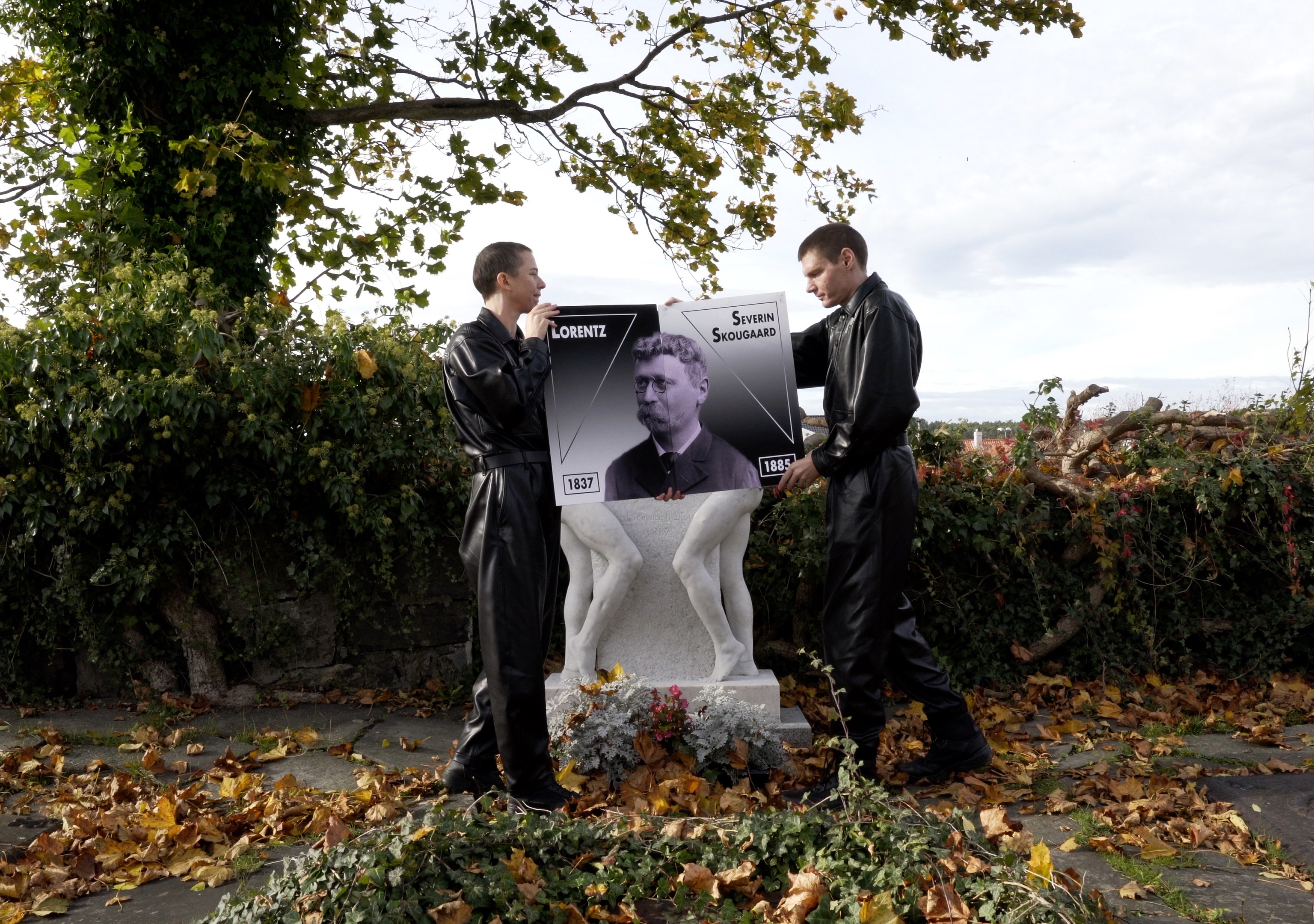Heather Jones: I’d like to focus this conversation specifically on The Grave Project, your ongoing collaborative project with Jess Miley. But before we start discussing the project itself, can you briefly introduce who you are, and how you and Jess Miley met and started working together? Do you maintain your own individual artistic practices or do you always work collaboratively?
Derek Sargent: Jess and I are artists from Australia. We met ten years ago while running an artist-run gallery in Adelaide called FELTspace. Jess currently lives in Berlin, and I moved to Norway three years ago to study for my Master’s in Bergen. I have an individual practice and only collaborate with Jess on The Grave Project, but it takes up a large chunk of my practice.
HJ: For those not familiar with the project, can you give an overview of The Grave Project? When did it start and what the impetus?
DS: We research public figures who have had an impact on queer and non-normative culture. The project examines the ways in which the queerness of these historical figures is used in the construction of their historical biographies and how the places they lived had a profound effect on their queer story. These personal histories act as a framework to examine contemporary ideas around queer existence. This research culminates in a pilgrimage to the burials sites of these individuals which is
documented in photography, film and text in order to create an alternative historical archive.
The idea started in 2018, Jess was living in Budapest, and I was doing a
residency there. We were conscious of being outsiders in terms of our own queerness and with the current government trying to erase queer existence. While at the residency, I discovered that Karl Maria Kertbeny, the person who coined the term homosexual, is buried in Budapest, and we visited his grave.
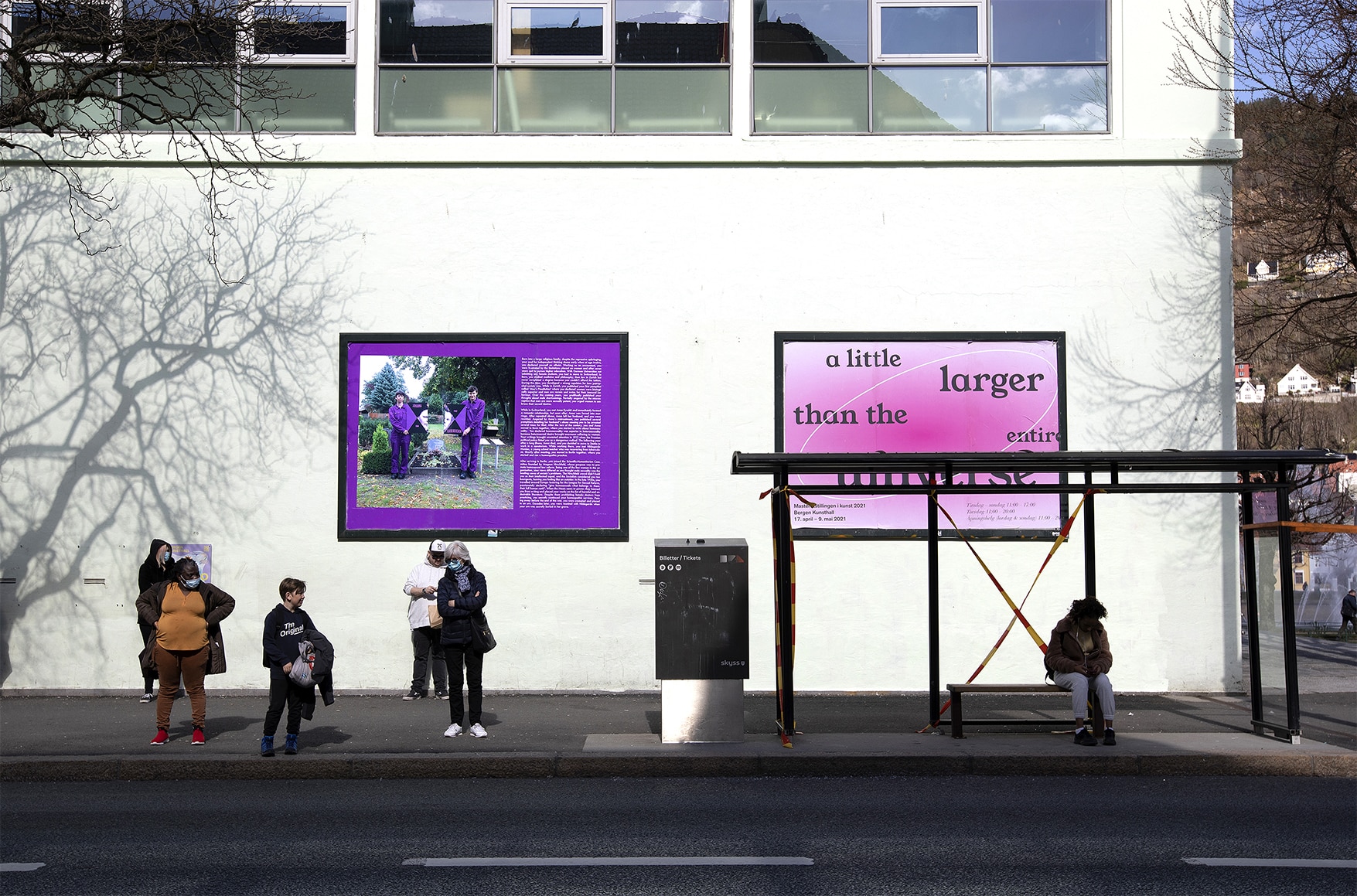
HJ: What locations, or chapters as you refer to them, exist so far?
DS: So far, we have done six chapters since 2018, and a chapter is usually based in a country, region or city. So far, we have been to Hungary, Paris, the South of France, Spain, Berlin and Norway.
HJ: You mentioned the project utilizes concepts of pilgrimage and eulogy in order to highlight the lives and influence of queer folk across a wide range of geographic locations and socio-political contexts. How are the specific subjects and locations for this project chosen? And why did you and Miley choose gravesites and tombstones as the focal point?
DS: We have chosen their gravesites as a marker in their narrative, the halfway point between their lived life and their biographical legacy. Gravesites have also traditionally had a strong association as a location for remembering and reflection. The places we choose to go are often based on where we are located personally in the world; Jess living in Berlin, and me in Norway, directed the last two locations. The next location we have chosen is Poland, and that was selected because of the current oppression of queer existence there.
HJ: The project website describes The Grave Project as performative research and the creation of an alternative historical archive. The website states:
“In the tradition of normative archives, evidence of queer life often tells a story of medical and criminal deviance. At the same time, we encounter this significant absence, where non-normative lives do not meet the requirements of knowledge institutions and miss the historical methods of depicting personal accounts, community and thus the complexity of queer pasts. Instead, we find and interpret their evidence in gossip, innuendo, and fragments of history.”
The last sentence about evidence of the rich complexity of queer lives existing mainly in fragmented gossip and innuendo struck me. How does one go about researching histories that were not accurately recorded? And why is the performative – or body-based – aspect centralized in your creation of a new historical archive?
DS: The lack of queerness in many people’s biographies is related to the performativity and temporality of queer acts, as a means to survive in a heteronormative world. Queer history has often been recorded differently from normative history. Queer lives have mostly been lived secretly. Leaving physical evidence of one’s queerness could lead to severe consequences. The performative action of the pilgrimage in The Grave Project is a way to highlight the ephemeral queer gestures of these individuals’ lives. The queerness in many of the biographies of the individuals we make a pilgrimage to has been lost or diminished. By making this performance of visiting their grave site, we are creating a physical form of their queer life. The written text we make for each person is created from what has been recorded about their lives – the information that has survived. Our presence is a way to represent what hasn’t been recorded.
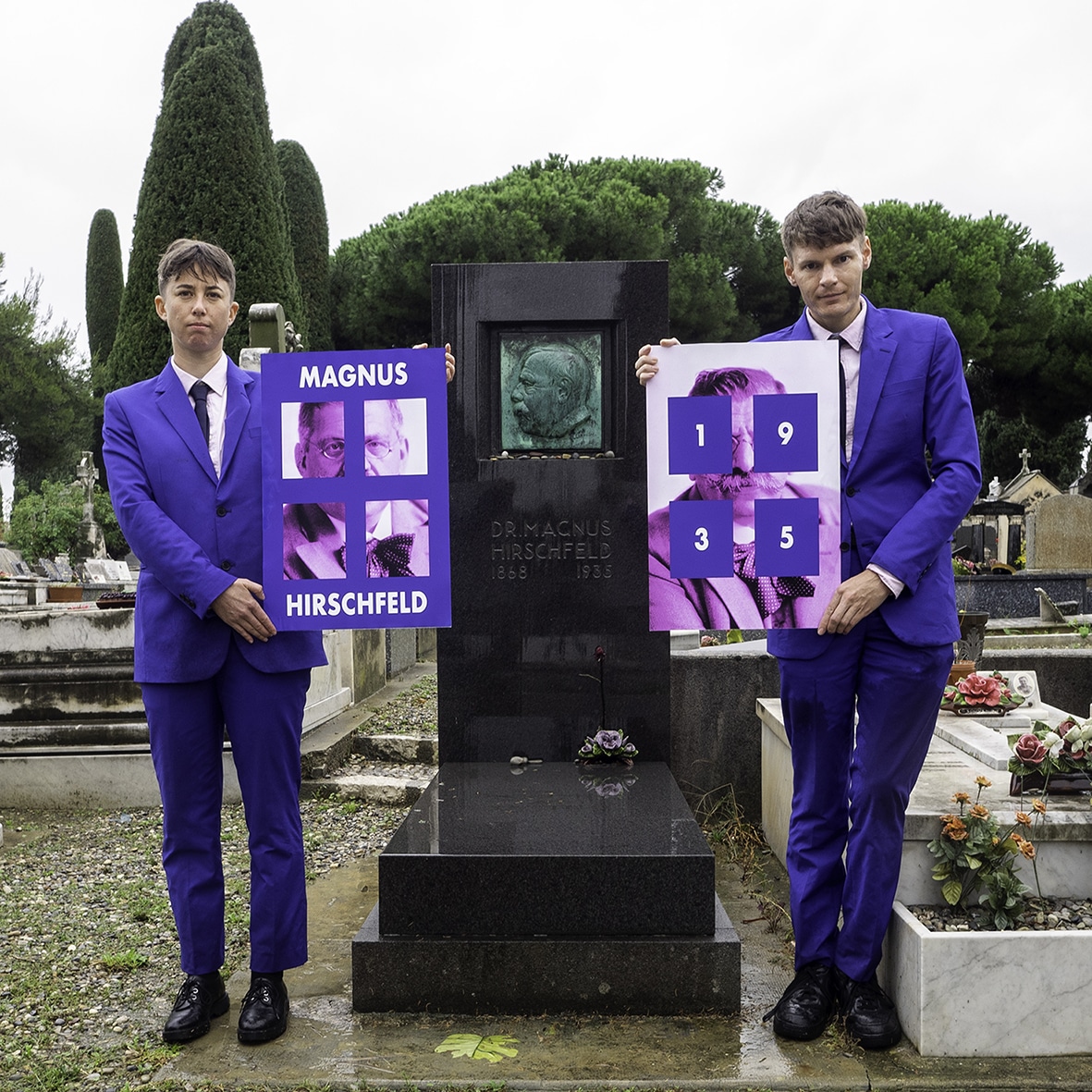
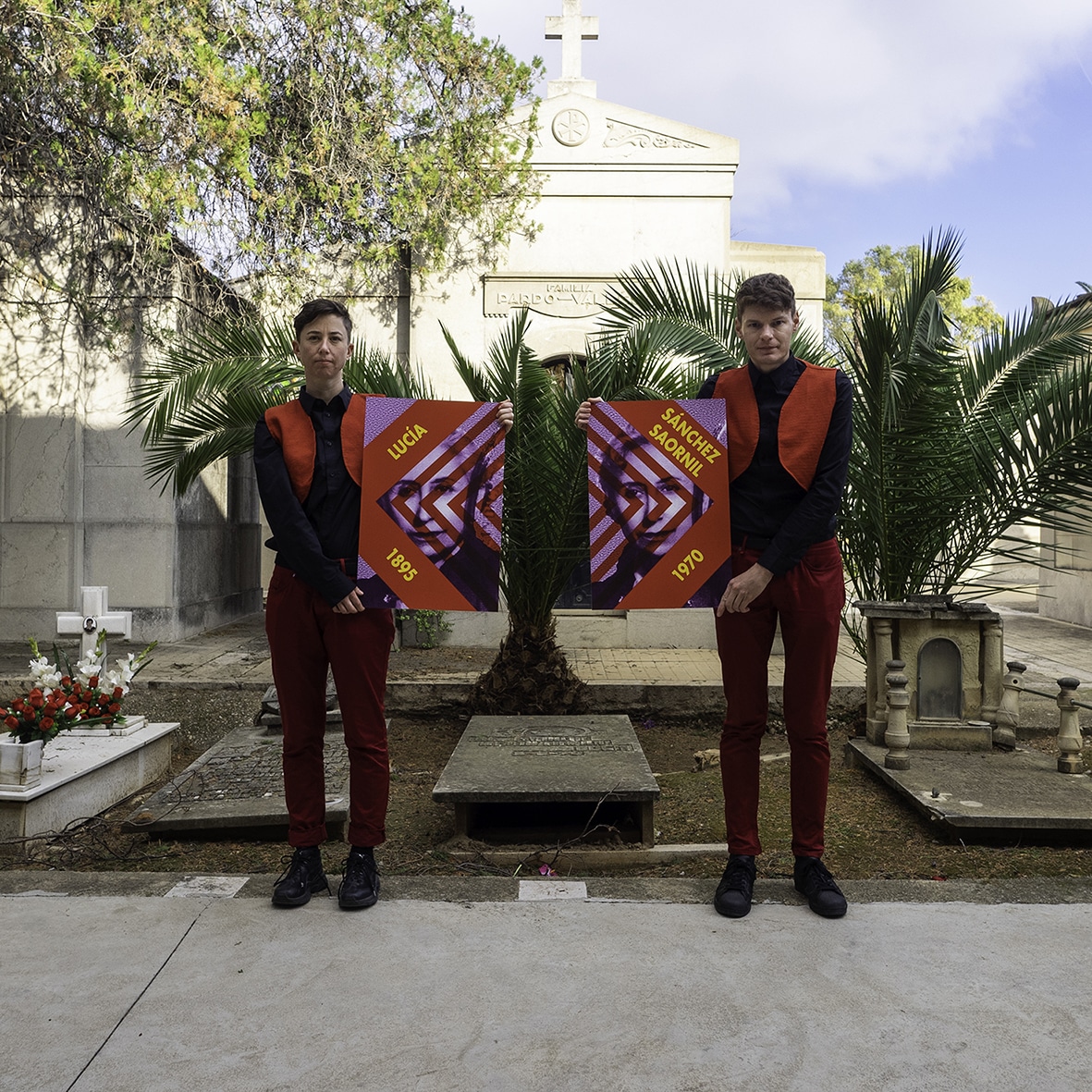
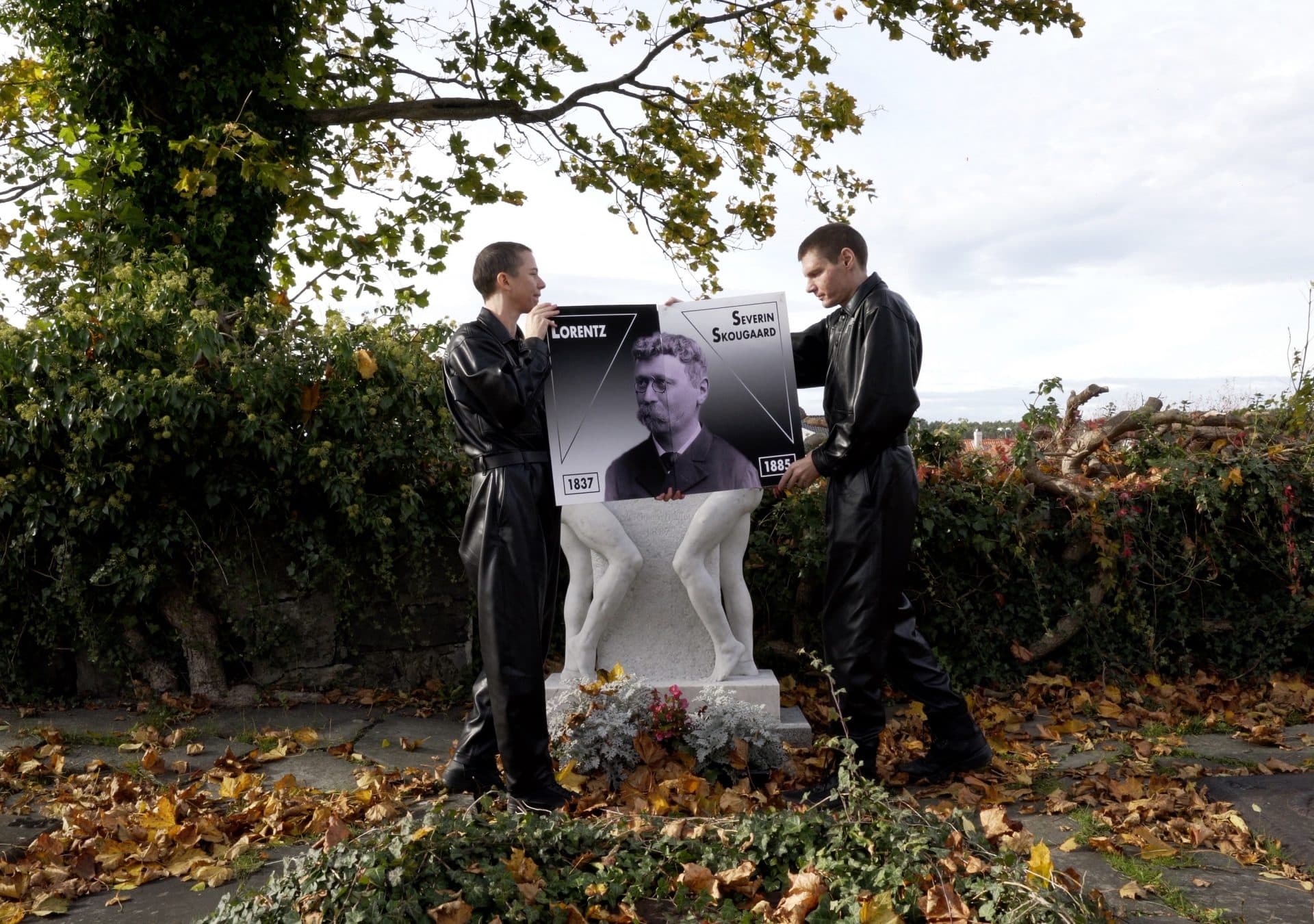
HJ: What is the final outcome of this research process? How do you present it to a larger audience?
DS: Each pilgrimage we make, we enter it into an archive we create; an archive that holds the collection of stories, moments and images we create for each individual. Our archive presentation uses various mediums and methods to make it accessible to the public, including exhibitions, online platforms like our website and social media, and publications. We are also working towards having a book published next year.
HJ: The Grave Project was presented in April at Studio 17 in Stavanger. Can you discuss this chapter of the project? Which lives did you choose to highlight and why?
DS: The work at Studio 17 was a chapter of The Grave Project we did in Norway in 2021. We made a pilgrimage to ten gravesites in five towns. Wenche Lowzow in Geilo, Ambrosia Tønnesen in Bergen, Borghild Krane in Tromsø, Lorentz Severin Skougaard in Langesund and Bolette Berg, Gunvor Hofmo, Pauline Hall, The Rocky Twins, Per Aabel and Alfhild Hovdan in Oslo. The restraints of finding a queer person who has lived a public life and has a grave make the selection pool relatively small. For the research for this project, we came up with about twenty-five names, and we selected the ones with the most interesting and diverse stories to tell.
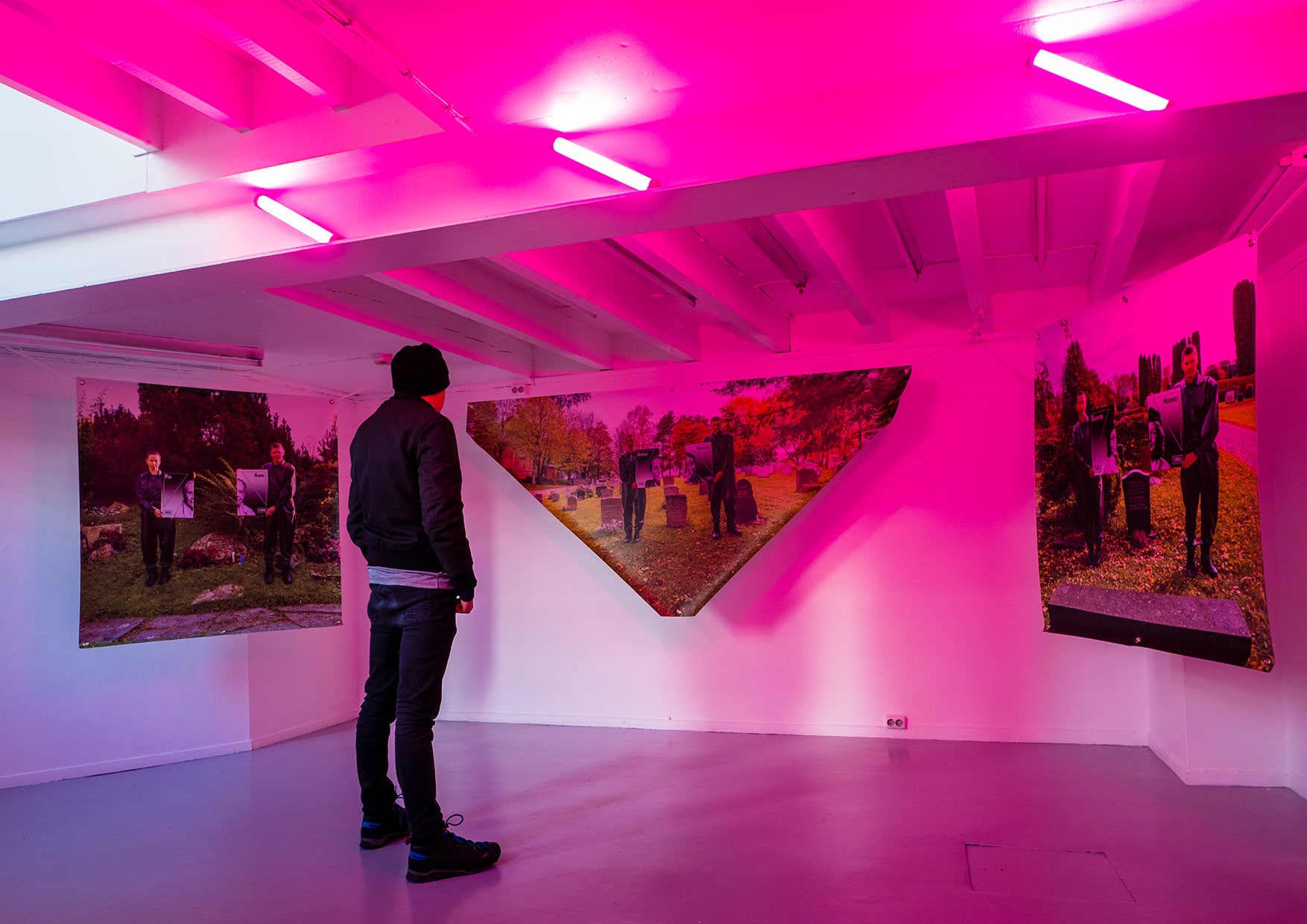
HJ: As a methodology, The Grave Project “extracts narratives and histories obscured within the recording and public representation of dominant histories.” Would you say the goal of this project is to subvert or correct the dominant historical narrative for the general public? Or is it to create an entirely different historical archive for the queer community? Or both? For whom are you doing this work and do you have an overarching goal in mind?
DS: I would say both; doing the research on queer people’s lives, you often find historians are really dismissive of certain aspects of queer individuals’ lives, and it is essential to correct these facts. Still, we are not historians, and we are trying to build an alternative archive of stories and gestures that is different. We don’t really make this work for a particular group of people, but we do find the people who have the strongest positive reaction to the work are often queer, and the ones who are most dismissive of it are usually not queer, which to me is a sign of why it’s important to continue to create this work.
HJ: Are there any plans to continue The Grave Project beyond this most recent iteration?
DS: Yes, we see this as a lifetime project and will continue to work on this as long as possible; part of the work is our ageing, using our bodies as a marker of time. We are currently working on the research for a project in Poland, and hopefully, in the future, we can bring this work outside of Europe.
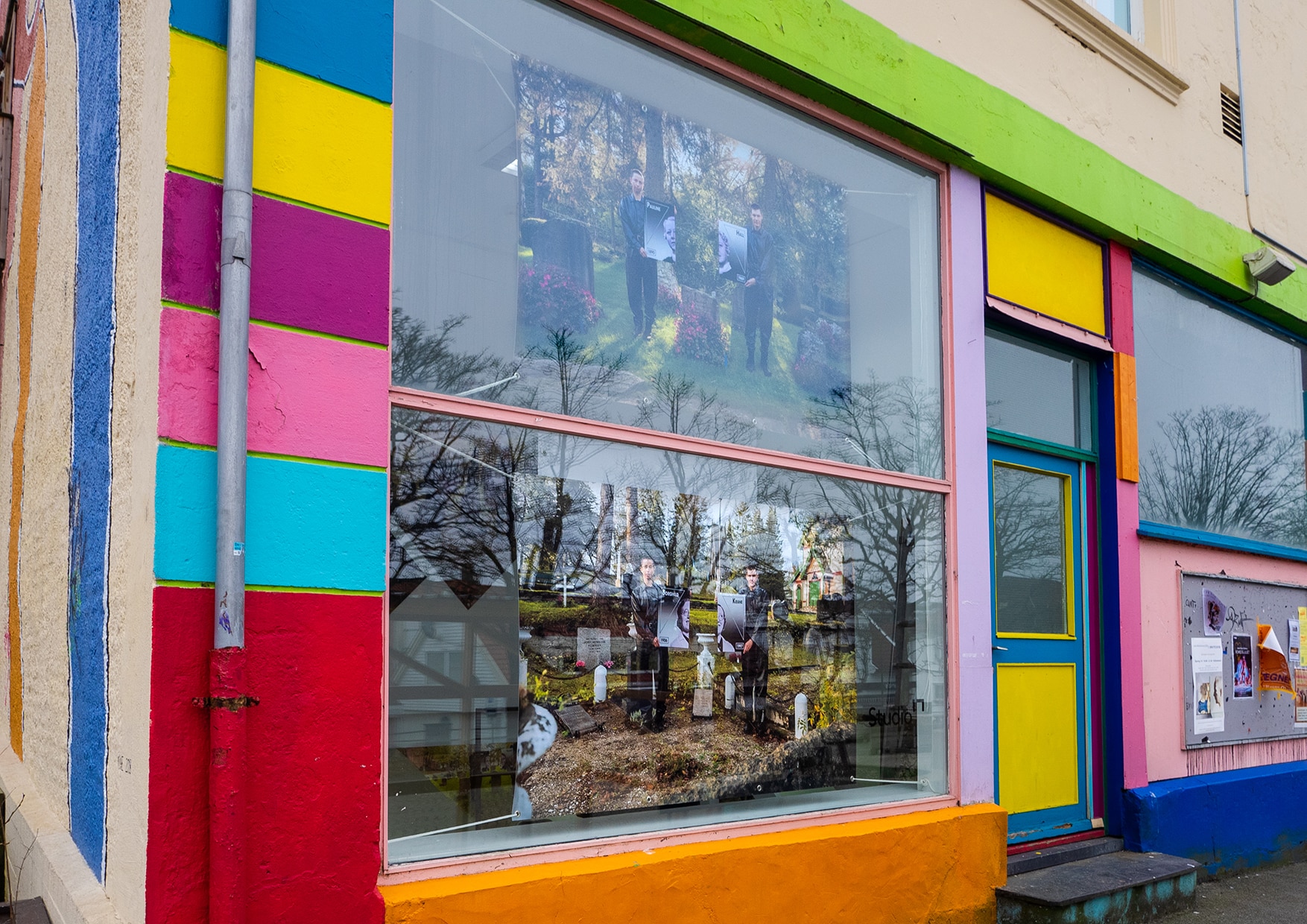
Derek Sargent is an artist currently based in Bergen, Norway. His multi-media practice investigates themes of sexual identity, authenticity and popular cultural production. He graduated from the University of South Australia with first class honours in 2013 where he won the Constance Gordon-Johnson Sculpture and Installation Prize. He has exhibited at the National Graduate Exhibition at the Perth Institute of Contemporary Art, and the Helpmann Academy Graduate exhibition. He has also had individual exhibitions at Fontanelle in Adelaide, Constance in Hobart and Firstdraft Gallery in Sydney. He has also been exhibited in both New York and London.In 2015 Sargent was awarded the Anne & Gordon Samstag international visual arts scholarship and travelled to London to complete a Graduate Diploma in Fine Art at the Chelsea College of the Arts. He is former Co-Director of the Adelaide ARI FELTspace and the former education officer at the South Australian School of Art Gallery.


